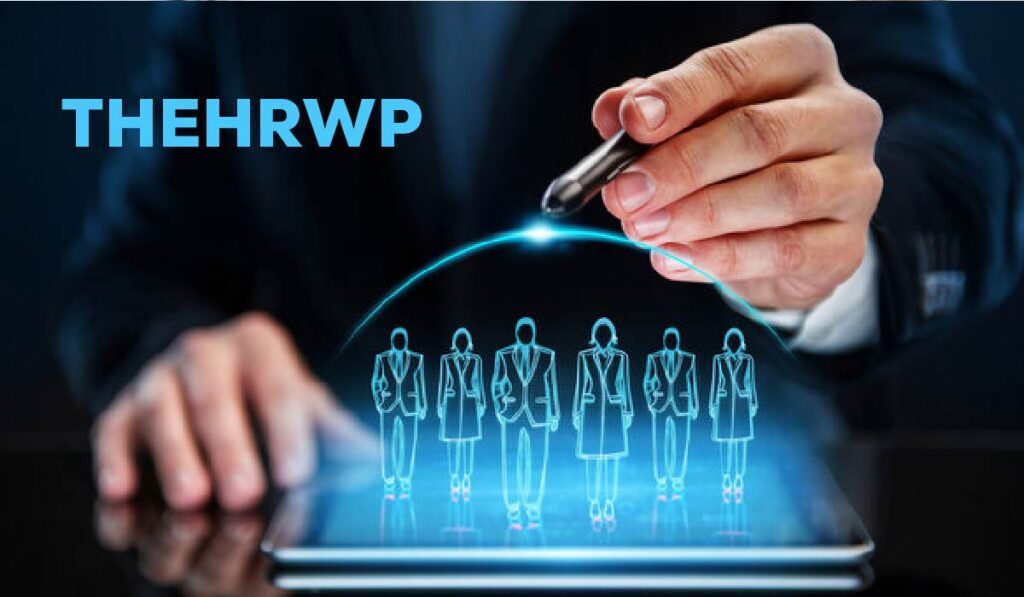In today’s dynamic work environment, the role of Human Resources has evolved from a primarily administrative function to a strategic partner crucial for driving business growth, enhancing employee experience, and shaping company culture. To meet these demands, businesses are turning to integrated, all-in-one solutions. Leading this transformation is TheHRWP (The Human Resources Workplace Platform), a comprehensive SaaS platform designed to streamline every facet of the employee lifecycle.
What is TheHRWP?
TheHRWP is a unified, cloud-based human resources management system (HRMS) that consolidates all HR processes into a single, intuitive platform. It moves beyond the limitations of disparate spreadsheets, standalone software, and manual paperwork, offering a centralized hub for employees, managers, and HR professionals. The platform is built on the principle of integration, ensuring that data flows seamlessly between functions, from hiring to retirement, providing unparalleled efficiency and data-driven insights.
you may also like:Närkes Elektriska
Core Features and Modules: The Power of an All-in-One Solution
TheHRWP’s strength lies in its modular yet interconnected design. Organizations can start with what they need and scale up as they grow.
- Applicant Tracking System (ATS): Streamline the entire recruitment process. Post jobs to multiple boards, manage candidate pipelines, schedule interviews, collaborate with hiring teams, and make data-driven hiring decisions—all from one place.
- Onboarding & Offboarding: Create seamless, automated welcome experiences for new hires with digital checklists, e-signature documents, and task assignments. Similarly, structured offboarding checklists ensure a smooth and compliant exit process.
- Employee Database & Records Management: Say goodbye to filing cabinets. TheHRWP acts as a single source of truth for all employee data, including personal details, job history, compensation, and documents. Role-based access ensures security and privacy.
- Time & Attendance: Simplify time tracking with digital timesheets, clock-in/out functionality (including mobile geo-fencing), and PTO (Paid Time Off) requests. The system automatically calculates overtime and integrates directly with payroll.
- Performance Management: Foster a culture of continuous feedback with tools for goal setting (OKRs), regular check-ins, 360-degree reviews, and performance appraisal cycles. Align individual objectives with company goals.
Key Benefits of Implementing TheHRWP
- Increased Efficiency & Productivity: Automate repetitive tasks, eliminate data redundancy, and streamline workflows, freeing up HR teams to focus on strategic initiatives.
- Enhanced Employee Experience: From a frictionless onboarding to easy access to information and tools for growth, TheHRWP creates a positive, modern experience that boosts engagement and retention.
- Improved Data Accuracy and Compliance: A centralized database reduces errors. The platform also helps maintain compliance with labor laws by providing tools for tracking certifications, managing required documents, and generating necessary reports.
- Data-Driven Decision Making: Move from gut feelings to informed strategies. Use analytics to understand turnover drivers, identify skill gaps, measure recruitment effectiveness, and justify HR investments with hard data.
- Scalability: Whether you’re a startup of 20 or an enterprise of 20,000, TheHRWP is designed to grow with you, adding modules and capacity as your needs evolve.
Is TheHRWP Right for Your Organization?
TheHRWP is ideal for small to large businesses looking to modernize their HR function. It is particularly valuable for companies experiencing rapid growth, where manual processes are becoming a bottleneck, or for those prioritizing a strong, cohesive company culture.
Conclusion
TheHRWP represents the future of human resources management. By integrating every touchpoint of the employee journey into a single, powerful platform, it empowers organizations to work smarter, not harder. It’s more than just software; it’s a strategic investment in your people, your processes, and your company’s future success. In the war for talent, providing a seamless, engaging, and efficient workplace experience isn’t just an advantage—it’s a necessity, and TheHRWP delivers exactly that.
FAQs
Q1: Is TheHRWP suitable for small businesses with under 50 employees?
A: Absolutely. Many providers offer scalable pricing tiers. Small businesses can start with essential modules like Core HR, Employee Self-Service, and PTO tracking to automate foundational processes without a large upfront investment, adding more features as they grow.
Q2: How does TheHRWP ensure the security of our sensitive employee data?
A: Reputable platforms like TheHRWP invest heavily in security. Key measures include:
- SOC 2 Type II Compliance: Audited standards for security, availability, and confidentiality.
- Data Encryption: Data is encrypted both in transit (using TLS) and at rest.
- Role-Based Access Controls: Permissions ensure employees and managers only see data relevant to their role.
- Regular Security Audits & Penetration Testing: Continuous evaluation of their security posture.
Always ask a vendor for their security whitepapers and compliance certifications.
Q3: Can we integrate TheHRWP with the other software we use (e.g., Slack, Microsoft Teams, our finance system)?
A: Yes, integration is a core strength of modern HR platforms. TheHRWP typically offers:
- Pre-built Integrations: For popular tools like Slack, Microsoft 365, Google Workspace, and major payroll providers.
- API Access: For creating custom integrations with proprietary or niche software used by your company.
Check the vendor’s integration marketplace or directory for a full list of supported connections.
Q4: What does the implementation process look like, and how long does it take?
A: Implementation time varies based on company size, data complexity, and the number of modules being activated. A basic implementation for a small company can take 2-4 weeks, while a large enterprise rollout can take several months. The process usually involves:
- Discovery & Planning: Defining goals and configuring the platform.
- Data Migration: Cleaning and importing existing employee data.
- Configuration & Customization: Setting up workflows, permissions, and branding.

